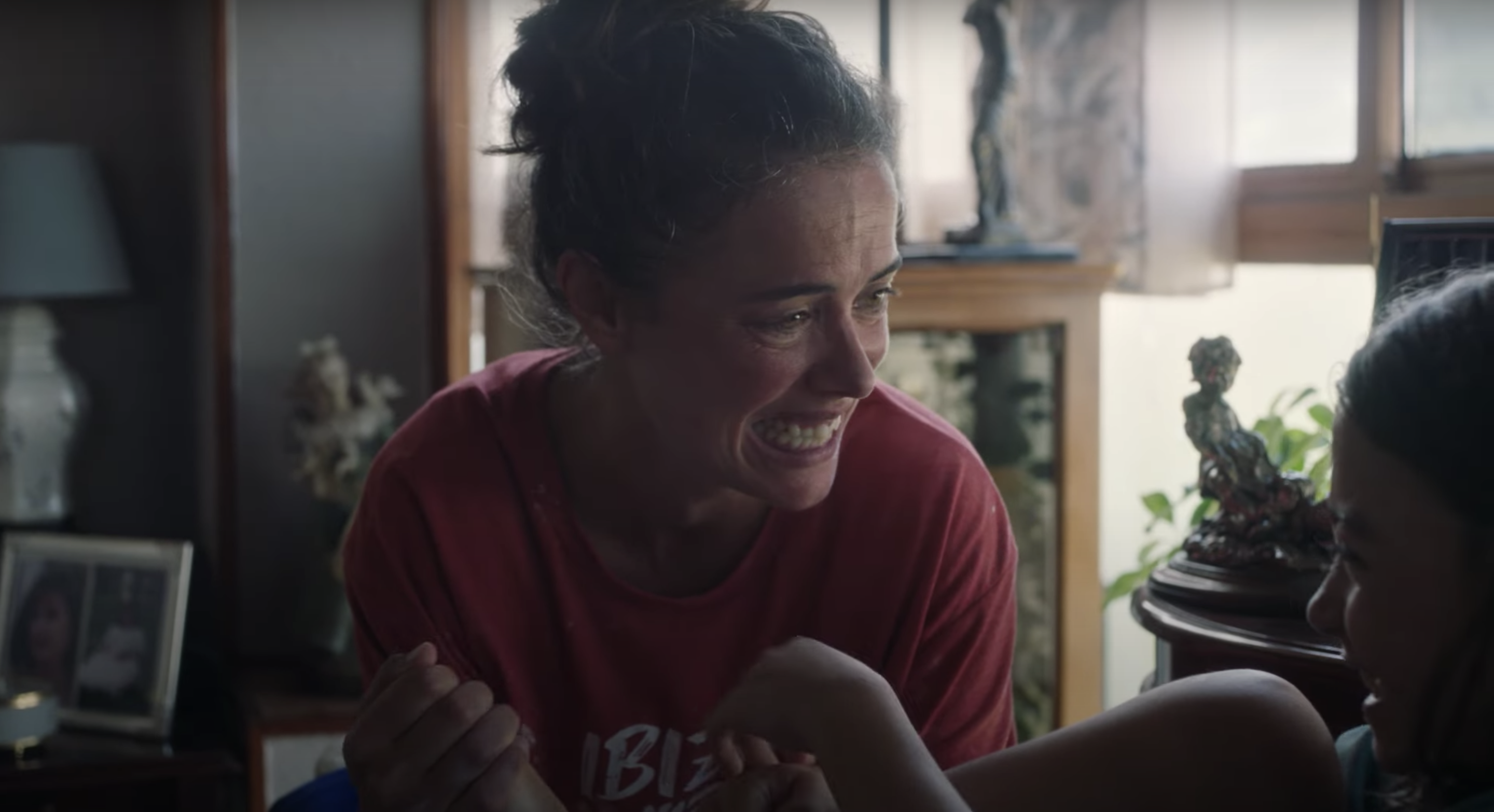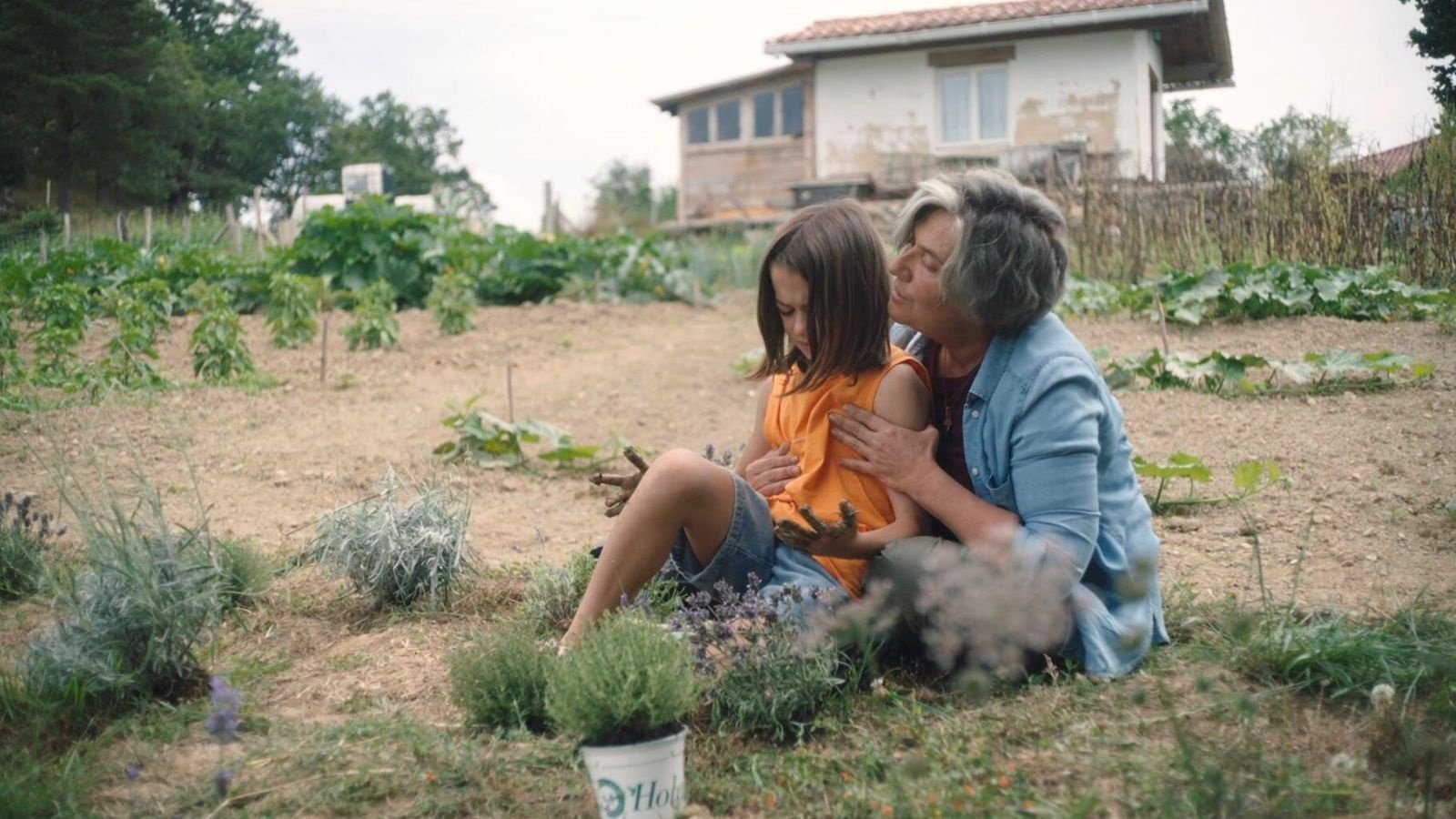review
Self-discovery is the central thread of Basque filmmaker Estibaliz Urresola Solaguren’s narrative feature debut 20,000 Species of Bees, a familial drama that explores the identity of an ambitious mother and her trans child with warmth and delicacy. The film begins with Ane (Patricia López Arnaiz) and her three children travelling from France to Northern Spain for a family reunion. It is here under the heat of the Spanish sun that both mother and child face a chance for transformation. Though an intergenerational portrait of femininity and womanhood, 20,000 Species of Bees is undeniably focused on eight-year-old Lucía (Sofía Otero). Forgoing her birth name and becoming irritated by her nickname Cocó, she eventually decides that Lucía is her chosen name. With shoulder-length mousy brown hair and colourful outfits, Lucía comes to understand her truth.
Directing this character-oriented drama with tenacity and sensitivity, Urresola shifts between the perspective of mother and daughter. Ane shares with her child that she hopes that they are not torn between a binary. Yet when Lucía comes to her with a sense of belonging, her mother is quick to deny her of labels. “What should I call you?” Ane asks one evening. Lucía responds: “Don’t call me anything.” Her family repeatedly encourage her to get a “boy haircut” and her father (Martxelo Rubio) claims to have “overindulged” her, announcing that she’s far too young to understand the complexities of identity.

Ideas of gender underscore 20,000 Species of Bees from the very beginning. Arriving at her parent’s home, Ane instantly returns to the garage, her makeshift studio, where she works late into the night sculpting Sylphid figures. She explains the mythological beings as “like a tall, slender woman” to her curious children. Chiselling, sawing, and cutting, Ane uses beeswax to shape her sculptural creations, following in the footsteps of her late father whose art she holds precious. Ane’s work is an exploration of a woman’s body—she takes a red hot knife to cut and add limbs, perfecting the shape of this figure. Negotiating the female form appears through Ane’s artwork as well as Lucía’s coming-of-age journey.
Beehives line the frame of Urresola’s tender, heartfelt drama. The director deconstructs the danger associated with bees and their painful sting; instead, the hives become a place of safety for Lucía. Like the bees, she too has been misunderstood. Lucía’s great-aunt Lourdes (Ane Gabarain) is the gentle, grounding presence that gracefully enters Lucía’s life. Lourdes helps the young girl get kitted up in a beekeeper’s protective suit and accompanies her to the hives. Basque apian mythology seeps into 20,000 Species of Bees with Lucía’s awe of the hives’ communal existence. Lourdes encourages Lucía to speak to the bees and share her secrets with them. The hive is an experience of harmony that she doesn’t have with her family, who seem to have strict ideas of Lucía’s future as they bicker amongst themselves.
The hive is an experience of harmony that she doesn’t have with her family.
Urresola’s arthouse style paints a glowing portrait of negotiating identity, singular in its naturalistic camerawork and stripped-back soundtrack. One shot, in particular, is especially memorable: the sun is setting on the mountainous horizon as Lucía taps on the beehives and informs them of her name. Eva Valiño’s sound design quietens to a whisper, emphasising that this is the loudest Lucía has ever been in proclaiming her name. It’s a gorgeous moment of self-assured peace. The tenderness is also visceral in Otero’s performance, which is equally powerful and delicate, gradually radiating her subtlety of emotion. The young actor’s debut is a moving showcase of complex thought, creating a character that isn’t infantilized.
Otero beautifully embodies Lucía’s curiosity, with childlike wonder she asks, “Are there mermaids here?” But as the film continues, Lucía’s questions grow increasingly reflective. “How come you know who you are and I don’t?” is a line delivered through tears in the darkness, as her mother holds her tightly. Later she asks her great-aunt: “Can I die and be reborn as a girl?” Finding the language to articulate her feelings drives this girl’s story of self-discovery through the combination of Otero’s generous performance and Urresola’s lifelike dialogue.

There have been several arthouse dramas in recent years broaching the topic of trans youth with rather clinical hands. Urresola’s warmth and sensitivity offer an exception. 20,000 Species of Bees is disarmingly gentle, comparable to Céline Sciamma’s Tomboy in how a story of gender identity can be compassionate, with transness as a non-issue in narrative presentation. While scenes of Lucía examining a bra lean towards obvious intention, 20,000 Species of Bees hits its stride when Urresola embraces her distinct tone.
When Lucía befriends another young woman, spoken language isn’t the communication used to understand. Instead, it’s a silent bond. When the pair wade into a lake together, their bodies are not a topic of conversation but their swimwear choices are. As they shuffle into the water, cinematographer Gina Ferrer’s camera hangs back in the shade of a tree, like a watchful parent, as the two paddle deeper under dappled sunlight, holding hands and giggling. It’s a truly delightful moment that demonstrates 20,000 Species of Bees’ simplicity when it comes to notions of the body; understanding can be reached with deeply-felt empathy.
Read our exclusive interview with director Estibaliz Urresola Solaguren here.
Curated by humans, not algorithms.
© 2024 A Good Movie to Watch. Altona Studio, LLC, all rights reserved.